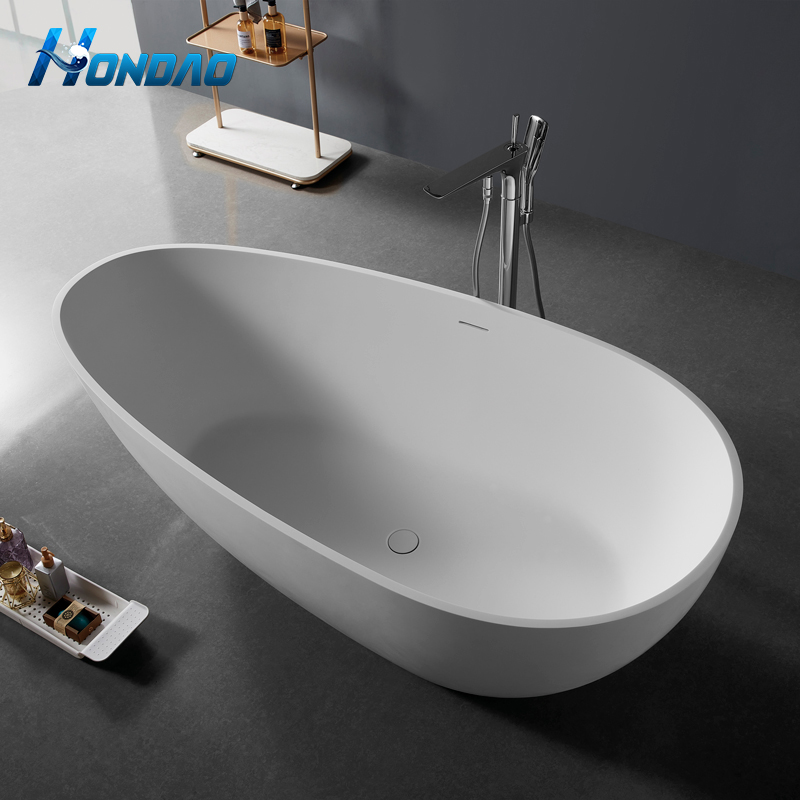Solid Surface Tubs: Everything You Need to Know
Date of Release: 2023-01-11
Solid surface is one of the hottest materials on the market today, on counters, sinks, and – our favorite! – bathtubs. The high-performing material deserves the respect and popularity it enjoys; read on to find out why (and everything you need to know before you buy).
What is solid surface?
Solid surface is a synthetically manufactured (manmade) material, composed of a blend of natural minerals and synthetic or plant-based resins. The mixture can be poured and seamlessly molded into virtually any shape and size.
The material is a popular choice for bathtubs due to its luxuriously smooth texture and heat-retention properties; solid surface tub walls are warm to the touch so that you can bathe for longer without adding hot water.

What are the pros and cons of solid surface tubs?
Pros of solid surface
· Seamless, one-piece surface
· Nonporous and hygienic; naturally resistant to stains, mildew, and mold
· Easy to clean; low-maintenance
· Easily repairable finish; retains a brand-new appearance for years
· Smooth, velvety texture (some offer a high-gloss finish option and paintable exterior)
· Various color options; consistent, non-fading color throughout
· Large variety of shapes and sizes
· Highly durable
· Retains heat
· Eco-friendly and recyclable
Cons of solid surface
· Relatively expensive
· May be heavy (though some, such as HONDAO tubs, are considerably lighter in weight)

What shapes and sizes do solid surface tubs come in?
Due to the moldable properties of solid surface, the tubs are available in a wide range of shapes, sizes, and installation options. Choose from freestanding, drop in, undermount, alcove, and even corner tubs in every conceivable shape: classic oval or rectangular tubs, sculpted hourglass and slipper silhouettes, or space-conserving round and square tubs, in sizes from the diminutive to the oversized. You can even opt for a solid surface air tub to turn ordinary bath time into extraordinary leisure time.
How do I clean and maintain a solid surface bathtub?
Solid surface is naturally antibacterial and easy to clean; it resists mold, mildew, and staining. While it’s not impervious to scratches or abrasions, surface damage is easy to repair.
How to clean a solid surface tub?
· Rinse the tub with warm water after each use; wipe with a soft cloth for best results
· Choose mild, nonabrasive cleaning solutions
· Avoid products and solutions that are abrasive (such as rough sponges) or contain acid or ammonia
How to repair scratches on a solid surface tub?
· Rinse the surface of the tub to remove any dirt or dust
· Rub coarse-grit sandpaper in small, circular motions to buff out the scratch
· Rub the surface smooth with fine-grit sandpaper
· Wipe off dust with a soft cloth
· Use a gentle polishing compound to polish the sanded and surrounding surfaces
How much does a solid surface tub cost?
Solid surface is relatively inexpensive, compared to the natural stone that it mimics, yet it’s a higher-end material that is more durable and versatile than less expensive materials such as acrylic. Prices depending on brand, size, and system.

















